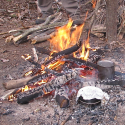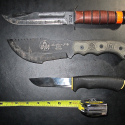
Now that Summer is almost here, many of us will be spending more time in the out of doors. That often means either camping, hiking in a local park, or even just lazing around in the backyard (which I fully hope to be doing). While, certainly, the risk of injury in any of these situations is low, problems can manage to arise. So, a little knowledge and preparation can go a long way should something happen. One type of typical outdoor injury is burns, and, in fact, the most common cause arises from cooking accidents. Whether it is caused by your backyard grill or your camp stove, minor burns to your hands may be caused by inadvertently grabbing hot metal; and potentially major burns may arise from stove flare-ups and scalds from tipping over pots of boiling liquid. In fact, these kind of burns can be more serious than that […]
Read more →
